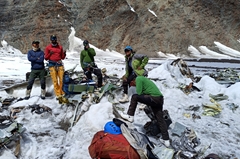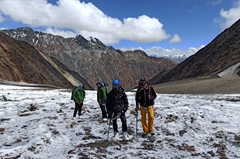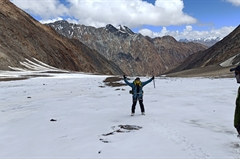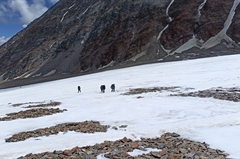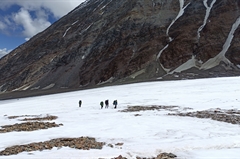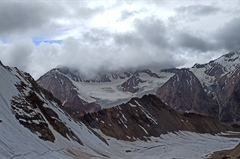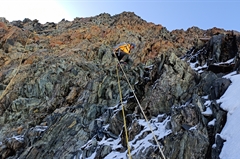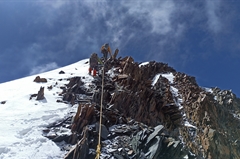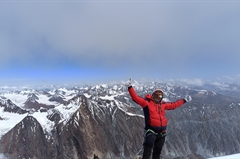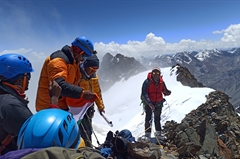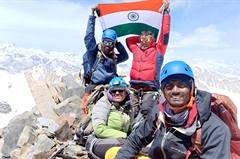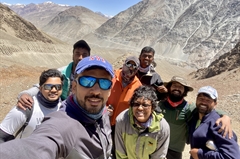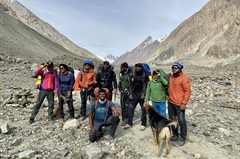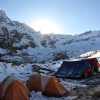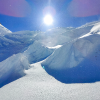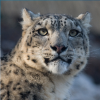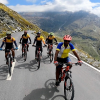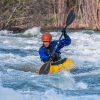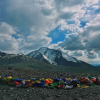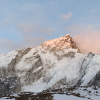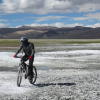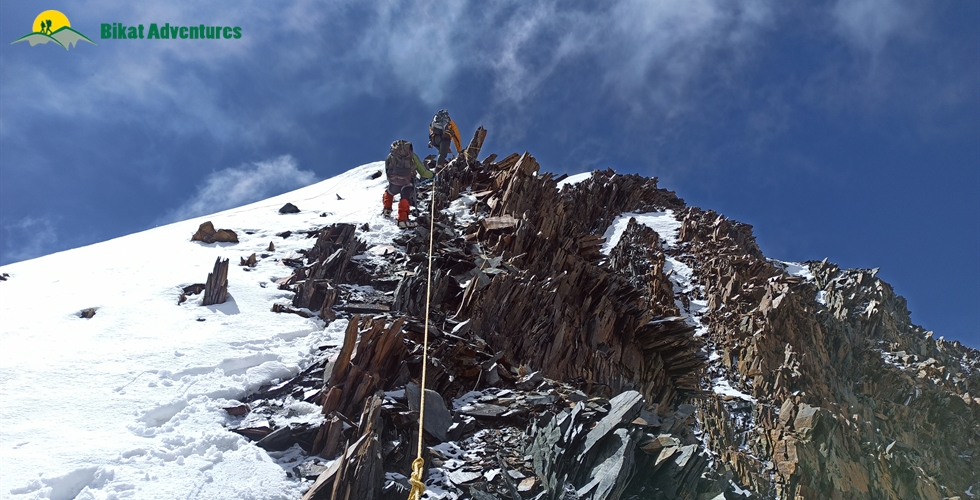
Mt. CB 13 and CB 14 Expedition
An Extreme Climb for the Extremely Courageous -Highly Technical Expedition meant for Experienced Climbers
Available Batches
Available Batches
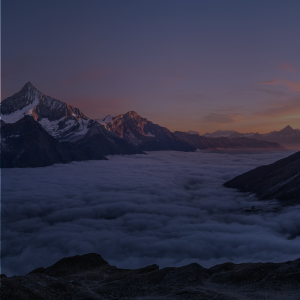
Brief Description
Brief Itinerary
Detailed Itinerary
Day 1: Make your way to Manali (2,050 M)
The trek starts from Manali, which is a very popular tourist destination as well as a high-altitude backpacking center and hence extremely accessible.
Day one is reserved for everyone to make their way to Manali and get settled into their accommodation. Since climbers will be coming to this altitude from sea level, the body will need time to get comfortable with the mountain air. While the body acclimatizes, we use this time to get acquainted with each other, go over some of the basic mountain rules and discuss the route, terrain, weather and all there is to know about what to expect on CB13 and CB14.
Day 2: Manali (2,050M) to Batal (4,060M)
Distance: 95 kms
Duration: 5-6 hours
We leave between 9 and 10 AM, after breakfast when we pick you up from the hotel. While there is no rush today since all that’s on the agenda is a 5-6 hour drive to Batal which is the trailhead for our expedition, we try to leave not-too-late for the roads in the mountains are unpredictable and it’s better to account for delays when we start. Batal is a small settlement situated in the Lahaul district of Himachal Pradesh and is also the basecamp for the infamous Chandratal Lake which is close to 14 kms from there.
The drive starts along the exuberant Beas River. Within 15 minutes of the drive, we leave the crowds of the city and the smell of fuel in the air behind and get onto the Leh-Manali highway which will take us straight to the head of the Atal Tunnel. Going through this 9.02 kms long tunnel, is an experience in itself. The tunnel being at an altitude of 3,048M is the longest highway single-tube tunnel above 10,000 feet. You should reach the head of the tunnel at the mark of an hour and would take close to 10 minutes to cross this all-weather engineering marvel.
Once we exit the tunnel, we are now along the murky Chinab River. The roads are characteristic of mountain roads with all its sharp turns on smooth surfaces. Right after we cross the tunnel, we begin to see a stark difference in the landscape. The trees have now shrunk to bushes, the valley is a bit more open and desolate. There are larger expanses of barren mountain-faces and grazing trails with the heavily forested mountains now nowhere in sight. What we do see in abundance though, are massive waterfalls along the way. The three major checkpoints on the way to Batal are Koksar, Gramphu and Chhatru where small dhabas are aplenty for your mid-journey cravings and snacking needs.
It should take us two hours to reach Gramphu which at 3,000M is close to half way to our destination for today. The roads from here on get tricky as we take the smaller, kachcha road to our left that goes towards Spiti. As smooth as the ride was up until now, it is all rocks, boulders and dust from here – the ultimate off-road experience with crazy nallas along the way which the drivers in the region cross with some superhero-level confidence. This road is said to be one of the riskiest to drive through. We cross hoards of wild horses in the landscape opposite the road and plenty cattle playing in the numerous waterfalls along the way. At the three hour mark, we hit a patch of long hairpin bends with a constant view of the roads mimicking the meandering river ahead, the roads almost like scribble lines on dry mountains, going in no specific direction, following no specific path. At the end of this section, we reach Chhatru which is at 3,200M. From here, Batal is a 2-3 hour drive. Expect to reach by early evening post which we set up the base camp which will be our home for quite a few nights on this expedition. The location is gorgeous to say the least – there is nothing much to do in the dry wilderness of Batal except soak in the scenic beauty of the place, listen to the sound of the winds bump into the mountains and gaze at the doings of the endless groups of horses and cattle by the evening. It’s so beautiful, even the pigeons look good in this setting!
Since we have already gained quite a bit of altitude for one day, do remember to keep yourself covered with appropriate layering for even though the sun here is harsh and it may feel warm, the wind at this altitude can do much damage.
If you are looking to indulge in some exploring, do visit the much famous Chacha Chachi dhaba right across from your campsite to hear some pretty amazing stories from Chacha and Chachi and feast yourself to some delicious food.
Day 3: Acclimatization at Batal (4,060M) (Click to View GPS data)
We wake up with no rush since we spent our first night at high-altitude and do not want to stress the body too much. Today is reserved for acclimatization to the altitude since we gained quite a bit of height (2,000M) the previous day and have also entered a much different terrain. Coming from the humid city air to the pleasant temperature of Manali to entering Lahaul, we have moved through many different climactic zones. The weather here, in Lahaul, is much drier making it harder still for the body to adapt. We will go for an acclimatization walk in the evening where we will gain close to 300-400M in altitude, but remember to stay active and spend as much time outside your tent as possible. Spending as much time exposed to this new altitude air will help the body adapt to it much better, prepping it for what’s to come in the following days.
Day 4: Batal (4,060M) to Base Camp (4,440M) (Click to View GPS data)
Distance: 10 kms
Duration: 7 hours
The actual trek starts today. We slowly move towards the upper reaches of the mountain. We try to leave right after an early breakfast at 7AM because it is likely to be a long day. There is a height gain of 450M and the weight on the back makes it seem much harder than it is.
The terrain is mostly rocks and dust with tufts of the leftover greens you will see for a long time to come. It is good practice for the boulder-strewn terrain we are about to enter in the coming days. Watch your step for it is very easy to twist your ankle on these rocky trails. We start out traversing comfortably on the edge of the mountain face on sketched out trails as we make blind turns to discover the next mountain we are about to cross. For how dusty these regions are, it would be a good idea to cover your mouth and nose in case you have a dust allergy.
To get to the basecamp, we walk alongside the murky Chandra river for the most part. One of the major challenges of getting to the basecamp is crossing the pagal nalla. There are multiple streams we need to cross within the first two hours of the day. The water level in some of the streams is so high that you are required to take off your shoes, wear them around your neck, roll up your pants and wade through the gushing and cold water with a rocky seabed not helping the crossover at all. These water crossings are also one reason that we need to leave early in the morning because the water levels rise significantly after 12 in the afternoon making it much harder to go through them. We get to these streams within the first half hour of the hike. Once out of this section, we are now alongside the river (Chandra) taking as many smooth turns as the river does, on a rocky terrain.
An hour and a half of starting our day, we make it to a vast open section with wild horses curiously watching us go by with mountains in your peripheral vision in all directions. A couple of minutes and the valley gets narrower and closes up again. After 6 kms and a the mark of 3 hours into our day, we reach another vast opening at the altitude of 4000M, this time one which is green and full of yellow flowers. After having spent the last few hours on boulders in bone dry terrain, this is sure a welcome change of landscape and a perfect spot to have our packed lunch for this beauty of a land also has a water source (which you will have to hunt for, mind you!). Rest as much as you can because the next challenge for the day awaits you.
Right after this grand opening, we are making a steep ascent of 300M straight. This slope eases out a bit and continues on for another 150M. Till 4,400M, it’s a climb up a green, rocky path after which it is all boulders. This continues on until we enter the last kilometer of our hike today which is mostly downhill and through rocks.
Expect to reach the campsite which lies next to the river latest by early evening. The base camp is all rocks with crumbling mountains on all four sides – do not be alarmed if you hear loud thundering sounds – that is only normal here with all the rocks falling from all the sides. Every area around the base camp is rock fall area!
Day 5: Acclimatization at Base Camp (4,440M)
The day starts with a puja. The base camp for CB13 has two small stone structures brightened by the colours of the prayer flags fluttering in the mighty winds, where we offer our prayers to the mountain gods and thank them for allowing us to be there. This sacred ritual where the team members, together, seek blessings for the safety and the success of the team ends with a sip of some brandy and some sweets to fill you with warmth along with the benedictions of the mountain.
A lot is to be achieved during our time at base camp. From the distribution and setting up of all the gear to technical training and practice of some basic techniques to better handle the odd terrain of CB13 and CB14. But before then, we have the entire day to rest our bodies and acclimatize to the terrain, altitude and temperature of the base camp which lies at 4,440M – a height gain of approximately 2,500M from Manali.
Day 6 to Day 11: Expedition. Click to view GPS data: (BC to ABC) (ABC to SC of CB13) (Summit attempt) (SC to ABC) (ABC to BC)
Since the conditions on high-altitude are unpredictable, there is a constant readjustment of plans to adapt to the situation at the time. Providing fixed day-wise schedules is hence tricky. But roughly, the schedule includes rotation rounds between camps which is a standard acclimatization process on high-altitude expeditions. An estimation of each day is as indicated below, but this is subject to change as per conditions.
CB13 and CB14 share a common Advance Base Camp at 4,860M. After ABC, there is one more camp, Summit Camp at 5,650M, for CB13 whereas CB14 is attempted from ABC (4,860M) itself.
Base Camp (4,440M) to Advance Base Camp (4,900M): Load ferry and occupy:
Distance and duration for load ferry: 7 kms and 6-7 hours
Distance and duration to occupy ABC: 3.5 kms and 4-5 hours
We make two rounds between Base Camp and Advance Base Camp – the first one to ferry our load and leave it at ABC to come back down to BC for the night. The next day, we go back up to ABC, this time to move camp. Till the BC we have mules to carry the common luggage like ration, butanes, tents, sleeping bags, mattresses and all our equipment. Nature of the terrain and the altitude prevents mules from going beyond BC and hence all the (common + personal) equipment and supplies must be divided between each member of the team to be taken to the next camp. Two rounds also help divide the weight between two days which comes to approximately 15 kgs per person. The boulder-heavy glacial terrain makes for a much harder climb with all that weight on your back but it gets easier the second time around. The entire route is on glacial moraine with no trails or marked routes. It is easy to get confused and lost here, so try to stick close together. Also be wary of black ice which will not always be visible to the eye but is extremely slippery. The last 200M is the most precarious and the most exhausting as it is an extremely steep climb over loose and crumbling rocks which provide for no sure footing at all. The river fall next to this steep climb also makes certain sections of the climb slippery with the water having turned the rocks smooth taking away from their grip. This last 200M takes close to 2 hours to get through. Once on top, the campsite lies just to the left from where we also get our very first glimpse of the two mountains we are going to climb. The first and unobstructed view of both thee peaks standing next to each other is magical.
Advance Base Camp (4,900M) to Summit Camp (5,650M):
Distance: 2.5 kms
Duration: 7-8 hours
We go straight from the camp towards CB13 and start to walk up its face – the slope starts out with snow and quickly shifts to rocks and boulders after 20M. The distance between these camps is not massive but the odd and treacherous terrain makes this a long and exhausting day. At the mark of one and a half kilometers and a height gain of 250M on a bed of rocks, we reach a massive snow field with the scattered remains of the army airplane that crashed on the mountain in 1968. It is quite unnerving to imagine the events from the time of the crash as all its remnants lie right in front of you as scattered pieces of a story in the most telling condition. From here on, things are only going to get harder. Once across this snow field, we rope up and put on our crampons as we start our ascent on the 60 degree slope. What makes this section really hard are the hidden crevasses scattered across the mountain’s face like landmines and the soft snow which does little to hold your weight. Once past this section, we reach yet another slope – this one alternating between rock and snow. This section is much more precarious and needs a fixed rope. It will be traversed using a jumar. Summit Camp lies at the end of the fixed rope section at the altitude of 5,650M.
The ease or difficulty of the climb between ABC and Summit Camp solely depends on the condition of the snow at the time and the weather which is known to turn from sunny to cloudy to it leading to snowfall and hail storms within seconds.
Summit Camp of CB13 (5,650M) to Summit of CB13 (6,264M):
We leave for the summit push anywhere between 12 and 1 AM. The approximately 650M of ascent is a constant shift between rock and snow and will be traversed using a fixed rope all the way through. It is a continuous and steep ascent and takes anywhere between 8-10 hours, one way, depending on the condition of the snow at the time. The last 150M to the summit is the most daunting and calls for actual rock climbing skills. The vertical patch of high rocks takes close to 2 hours to climb – one climber at the time must ascent on this section since it is an accident prone area with loose rocks getting knocked down with each step up, the dislodged rocks likely to hit the climber behind. With the terrain being dry and rocky, the entire route to the summit is prone to rock fall from all directions – it serves well to be highly cautious at all times.
Return to ABC (4,900M):
The climb down from Summit to Summit Camp should take anywhere between 6-8 hours. Depending on the condition of the team, it can be decided if the descent to ABC is to be made on the same day or after a night of rest at Summit Camp. CB13 and CB14 share the same Advance Base Camp. After a day of rest, this is where we make our summit push for CB14 from.
ABC (4,900M) to CB14 (6,078M):
The difficulty and duration of this climb will solely depend on the snow and weather conditions at the time.
Day 12 & Day 13: Reserve Days
In case of bad weather or other difficulties, Day 12 and 13 are reserved for a second summit attempt – one reserve day for each peak. These will only get used if unexpected and unforeseeable conditions present themselves at the last minute preventing the first summit push on either of the peaks in the expedition.
Day 14: Advance Base Camp (4,900M) To Base Camp (4,440M)
Distance: 3.5-4 kms
Duration: 2.5-3.5 hours
We trace our steps back to Base Camp after both the expeditions are over – the same route as we climbed up.
Day 15: Base Camp (4,440M) to Batal (4,060M) (Click to View GPS data)
We trace our steps back to Batal through the same route we took to get here. Try to leave early so as to cross the pagal nallah in time before it gets flooded. Given the distance between BC and Batal, we camp out at Batal before pushing off for Manali the next day.
Day 16: Batal (4,060M) to Manali (2,050M)
Distance: 95 kms
Duration: 5-6 hours
Expect to reach Manali by evening. It is recommended that you plan your journey forward the next day in case of any unforeseeable delays en route.
What's Included
- Food as per menu on the trek
- Forest Permits/Camping Charges (upto the amount charged for Indian nationals)
- 4 season Dome Tents, Thermal rated Sleeping bags, Sleeping mats
- Safety Equipment includes static rescue rope, seat harness, carabiners, pulleys
- Expedition guide, cook, helpers, HAP and LAP for carrying common supplies
- Course certified & experienced Expedition Leader with Wilderness Emergency Responder & Rescue. course from NIM Uttarkashi
- Technical Equipment - PP Ropes, Helmet, Ice Axe, Crampons, Mountaineering Boots, Snow Stake, Dead Man/Boy
- Peak Booking Fee Charges (upto the amount charged for Indian nationals)
What's Not Included
- Portage of personal bags during the expedition
- Meals during hotel stay in Manali
- Cost of any kind of Travel Insurance.
- IMF Peak Booking Fee for foreign nationals US$ 250 for a team of two members and US$ 110 for every additional participants
- Forest Permit / Camping Fee for foreign nationals (USD 880-1000 upto group of 10)
- Mandatory Liaison Officer Fee for foreign expeditions ( ~USD 500 for group of 10)
Are you Eligible for this Adventure?
The expedition is technically challenging in addition to it being a dual climb. Having said that, these peaks are reserved for experienced and trained climbers only. It is essential to have some past experience in high-altitude in addition to a know-how of basic mountaineering techniques. A Basic Mountaineering Course certification is recommended but is not mandatory.
BRS Level Required
This makes it mandatory for you to have high-altitude experience of preferably multiple treks marked at level 6 on the BRS. The altitude, the terrain and the nature of the climb demand a certain level of skill and a need for you to be aware of how your body reacts to the various features of high altitude environment.
If you do not know what level of BRS trek would suit you best, worry not! Fill out this Form:
we will send you a progression chart to help you comfortably get out of your comfort zone in order to level up and ultimately reach your highest potential in the big, bad world of outdoor adventure.
Packing List
This is a list of essential items for individuals doing the trek with Bikat Adventures. This list contains only those items which the participants are required to bring with them. The list excludes those items which are provided by Bikat Adventures on the trek. We have divided the items into five categories. All the items in the list are essential except for those marked as optional.
Trekking Gear
- Ruck sack bag with rain cover. Qty -1
- Day Pack Bag - Recommended for treks with summit day
- Head Torch with spare Batteries. Qty -1
- U V protection sunglasses. Qty -1 Here is how you can choose the best sunglasses for trekking.
- Water Bottles: 2 bottles of 1 liter each
Footwear
- Non-skid, deep treaded, high-ankle trekking shoes Qty -1
- Pair of light weight Slipper/Sandals Qty -1
Clothing
- Quick Dry Warm lower or Track Pants. Qty - 2
- Full sleeves T-shirts/ Sweatshirts. 1 for every 2 days of trekking
- Pair of thick woolen socks. 1 pair for every two days of trekking
- Thermal Body warmer Upper & Lower. Qty-1
- Undergarments. Qty - 1 for every day of trekking
- Warm jacket closed at wrist & neck .Qty-1
- Full sleeves sweater. Qty -1
- Rain wear ( Jacket & Pants ) . Qty-1
- Pair of waterproof, warm gloves. Qty-1
- Woolen cap. Qty-1
- Sun shielding Hat. Qty -1
Toiletries
- Personal toiletries kit (Small Towel, Toilet paper, paper soap, Bar soap, toothbrush, toothpaste, cold cream, etc.)
- Sun screen lotion small pack. Qty -1 Here is your Sun Protection 101 to stay safe in the bright sunny outdoors.
- Lip Balm small pack. Qty-1
Utensils
- Small size, Light weight & Leak proof lunch box. Qty-1
- Plate. Qty- 1
- Spoon.Qty-1
- Tea/Coffee (plastic) Mug.Qty-1
Miscellaneous
- Camera (Optional)
- Carry your medicines in plenty in case you have any specific ailment. Consult your doctor before joining the trek.
- Dry fruits, Nuts, Chocolate bars (Optional)
Frequently Asked Questions
Why Bikat?
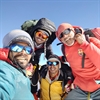

Small Group Size
Our batch sizes are capped at 15 for smaller treks with the trek leader and trekker ratio of 1:8. This ratio, in our years of experience, has proven to deliver the best trekking experience for individuals as well as groups. Capping the size of the group ensures individual attention to each trekker so that no signs of distress or need during the trek go unnoticed. It also helps to form a more cohesive cohort with better group energy which helps define the rhythm and pace of days on the trek. As you go higher up on the BRS scale, since the stakes are higher, expeditions have an even smaller group size with the ratio of expedition leader to climber set at 1:2.
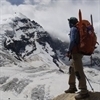

Qualified Expedition Leaders
We follow a rigorous regime of hiring and training our experts in the field. Each trek leader is a certified mountaineer with years of experience in the field. In addition to their qualification, they also go through practical and situational training to tackle any and all kinds of sudden conditions that may present themselves on the ground. Being unpredictable is the core nature of the mountains but being ready for any circumstance as best as possible is a controllable asset that we try to nurture. Our field experts are also trained in basic medicine and first-aid response. Watch: Forerunners - The Making of A Trek Leader At Bikat Adventures
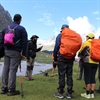

Guided Progression
Since Bikat Adventures is a learning-based organization, we help you climb up the ladder of difficulty within the sphere of outdoor adventure systematically. Our on-ground training modules are designed to handhold you through the upskilling process so that you are ready to take on bigger challenges.
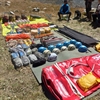

Equipment Quality and Check
All the gear used on our treks and expeditions is tried and tested, maintained for good quality, and is overall top-notch in quality and condition. We are continually looking to obtain the best of everything there is in the market so as to ensure optimum safety.


Support Systems
Along with the staff you see on-ground, we have a team of superheroes working in the background to give you the best experience possible. Our background team also comprises local staff from each area who know the region best. Having local support helps with studying the area, pre-planning, execution, and in receiving timely support in case of emergencies in these remote locations.
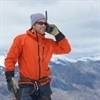

Communication
Our on-field staff is in constant contact with our teams based in primary locations so as to eliminate any avoidable delay in reaching additional help and support when required. We try to use the best tools for communication available, including satellite phones, in regions where they are not restricted.
What our customers Say
Cancellation Policy
Cash refund
Cancellations up to 60 days prior to departure date
Between 60 days to 20 days prior to departure date
Cancellations within 20 days prior to departure date
Voucher refund
Cancellations upto 60 days prior to departure date
Between 60 days upto 20 days prior to departure date
Between 20 days upto 5 days prior to departure date
Less than 5 days prior to departure date
- Cash refund is applicable only in case of bookings made without using any promotional offer code or Cancellation Vouchers or running discounts
- This is only a brief of cancellation terms. For finer details please refer Detailed Cancellation Policy.
Blog Posts
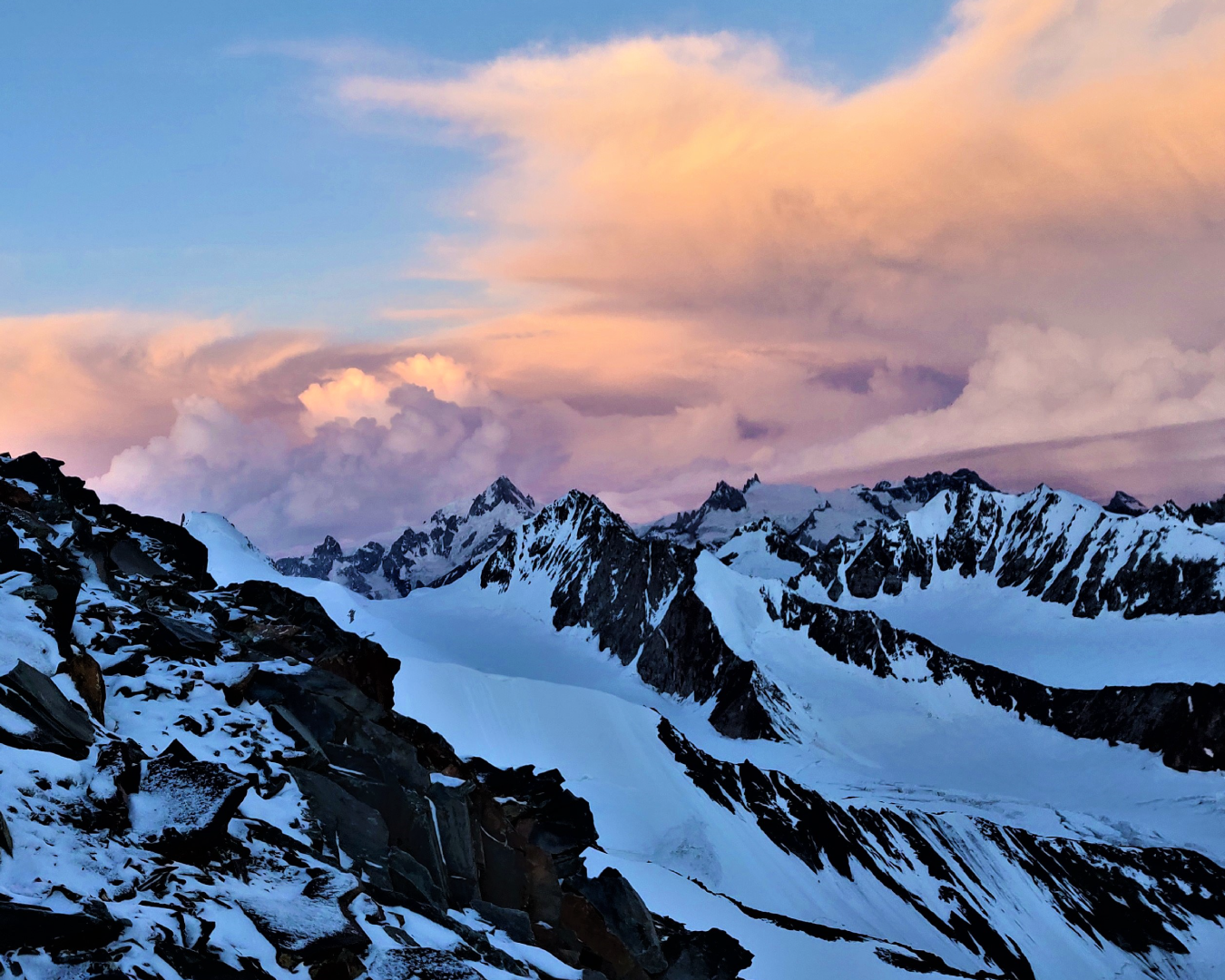
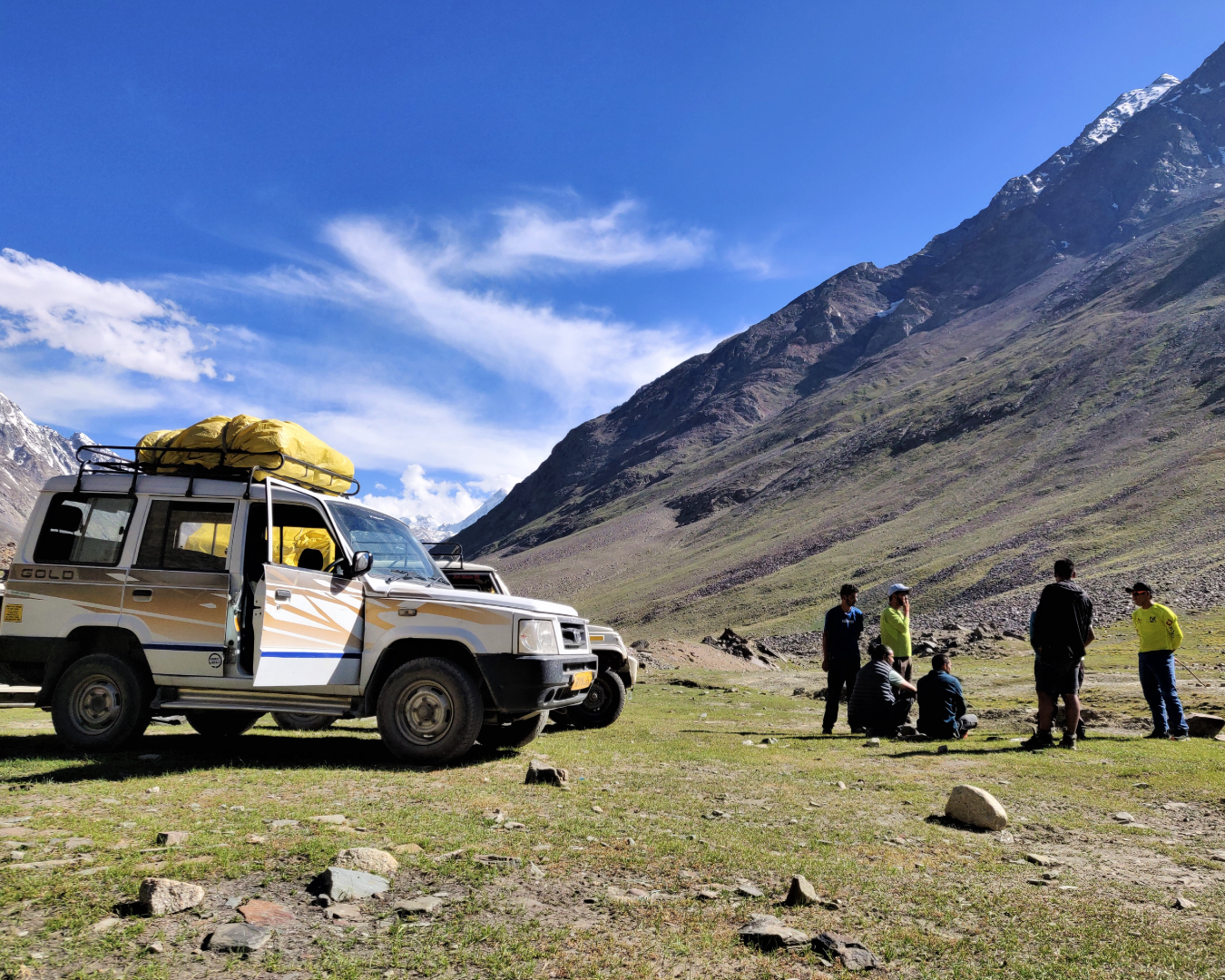
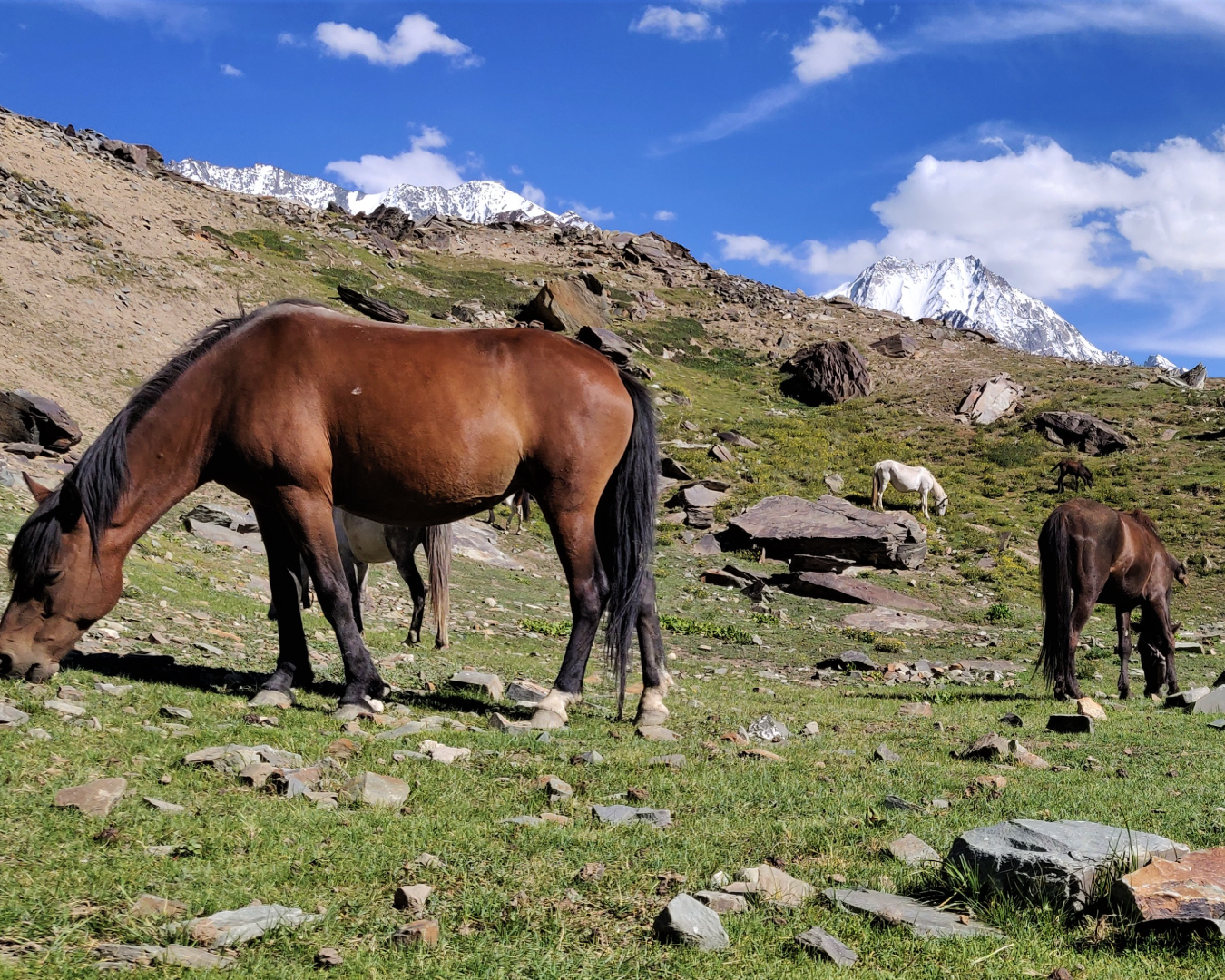
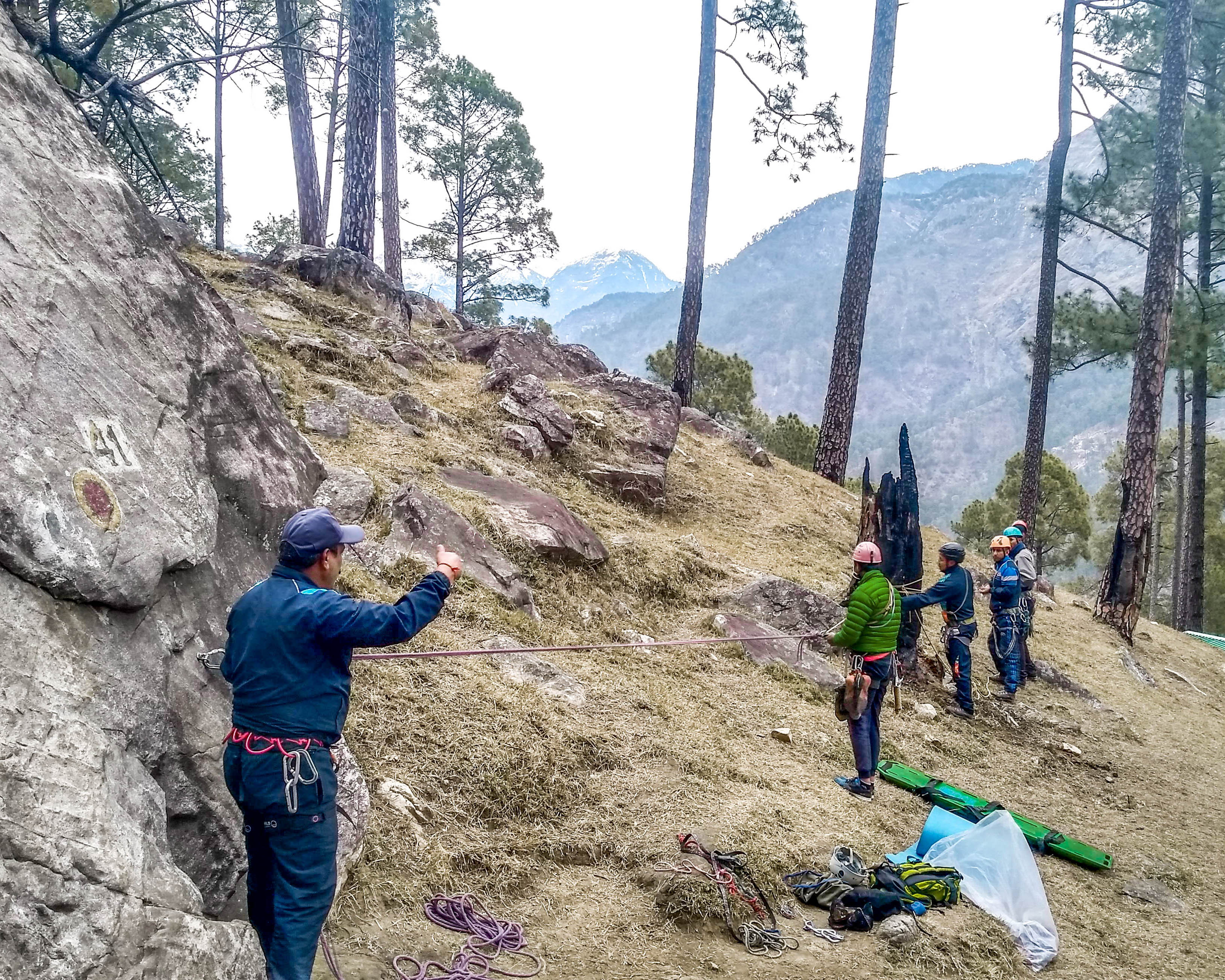
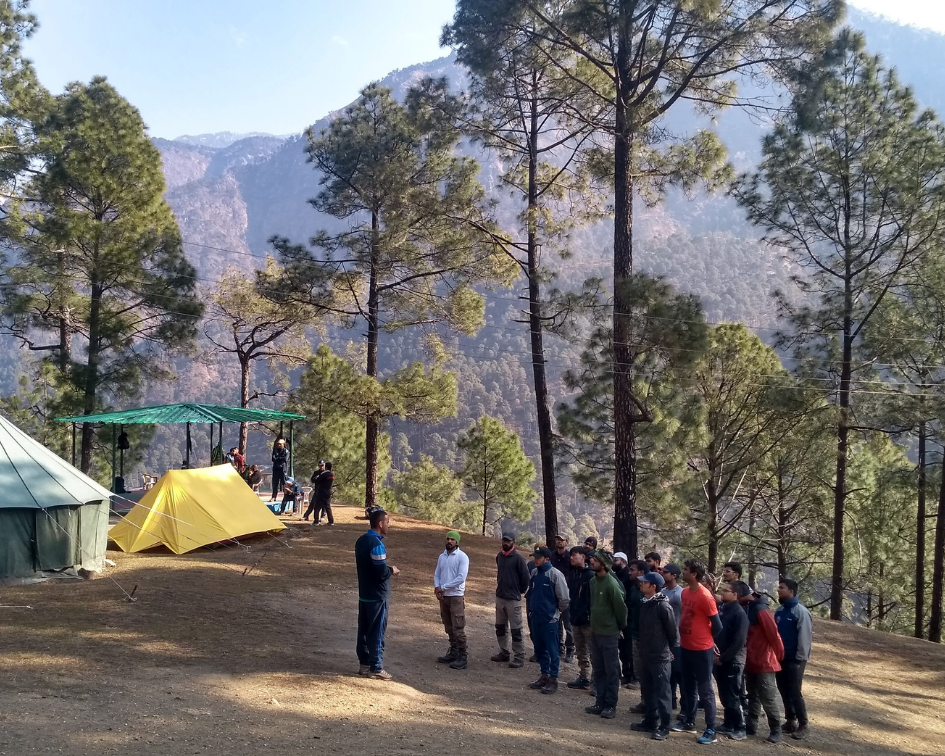
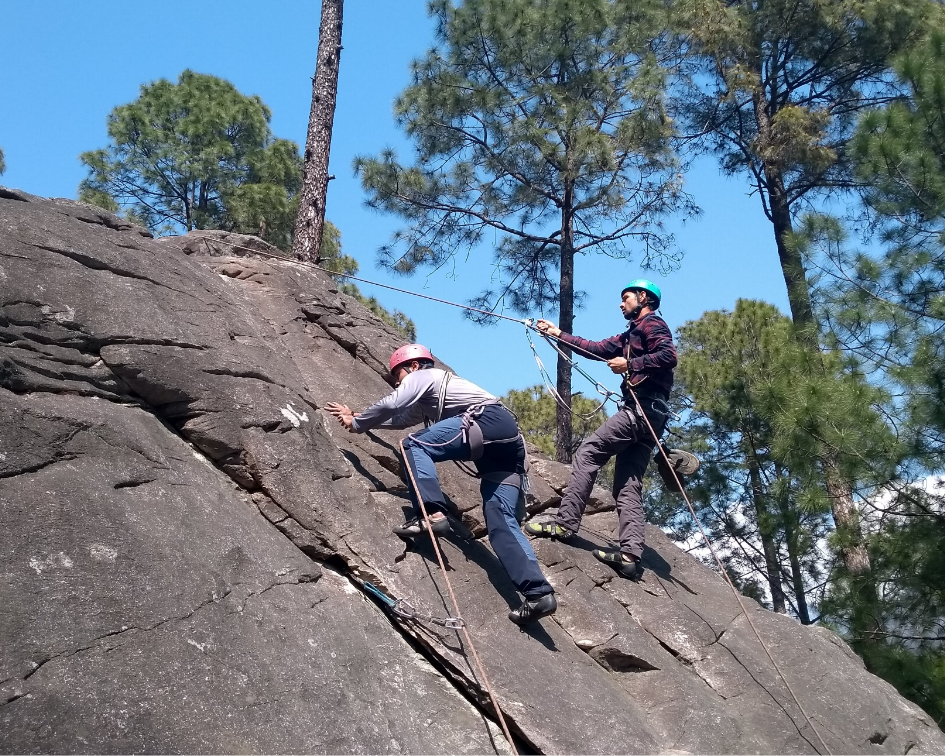
Similar Adventures
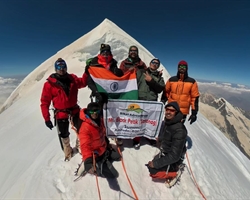
Mt. Black Peak
The Highest Peak of the Saraswati Range of Mountains - Technical Expedition meant for Experienced Trekkers
Uttarakhand
16 Days
BRS 7
6387 m

Mt. Deo Tibba Peak
The Perfect Technical Expedition Meant for Highly Experienced Trekkers Only
Himachal
15 Days
BRS 7
6001 m
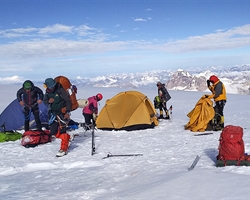
Mt. Nun Peak
The Roof of Ladakh- A Highly Technical Expedition meant for experienced climbers only.
Ladakh
23 Days
BRS 8
7135 m

